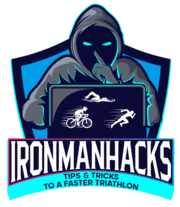Cebu, Philippines, 2017. I was just able to see over 90% of the heads in front of me. I’m not that tall, but with the beach sloping down, from my vantage point most of the athletes were on a slight decline, leading up to the surf, and I could see their heads.
A sea of colored swim caps. Gold, silver and bronze for the All-World Athletes, neon green, yellow, and orange for different age groups. And then whites. White? Yep, the weaker swimmers.
The white swim caps, at this race, were for those who were not so confident in their swimming ability. The marshals in the kayaks would look out for these guys and be prepared to rescue them at the slightest hint of a struggle.
But dozens of these guys were right behind the pros, and mixed in with the AWAs! How in the world could a weak swimmer proclaim to be a sub-30-minute finisher?
At this race, like some others, athletes were allowed to self-seed. This means we had to choose the most appropriate starting pens based on our expected finish times. So if you knew you were going to finish in more than 45 minutes, for example, you had to go in that pen.
Clearly, many of these white-cappers had dishonesty self-seeded. They were crowding the pen for the faster swimmers and were surely going to get in the way during the swim. And to what benefit? Hardly any. They’d just end up getting passed and swum over, and would become nuisances to others.
The ideal place to seed yourself is in the front of the correct pen. You want to be in front to be among the more aggressive (and presumably faster) swimmers that will pull you along. (See tip #2: Let the others do the pacing in the swim).
In other races, however, self-seeding is not possible – you may get chucked into age-group pens or it may be a free-for-all, but I think the message is clear:
- Get on the heels of the fast guys
- Get out of the way of the fast guys
